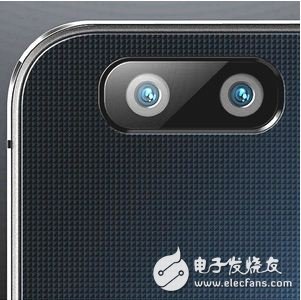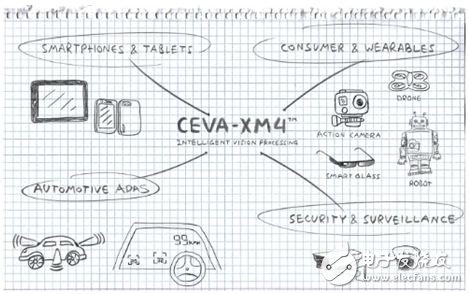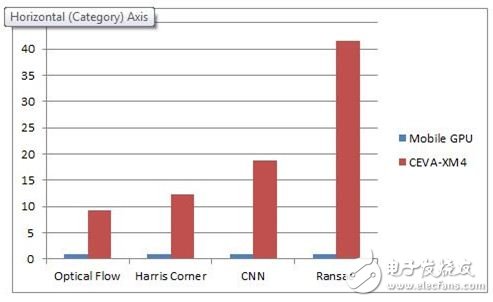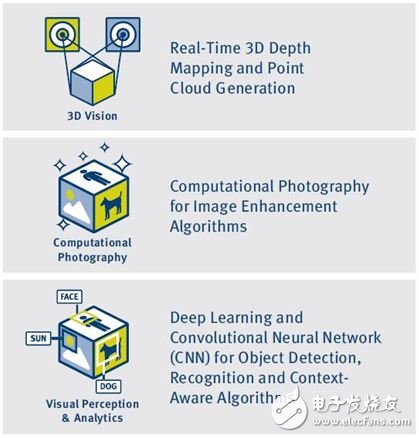Computer vision is closer to human vision
The advent of the new era of computer vision has prompted advanced technologies such as augmented reality and holographic imaging to move from mobile desktops to mobile and embedded platforms, while also allowing existing hardware, including CPUs and GPUs, to face performance limits.
As developers continue to add new multimedia capabilities to smartphones, tablets, wearables, surveillance devices and connected cars, CPUs and GPUs are the primary bearer for processing intensive image algorithms in today's designs. However, OEMs and developers have had to make some compromises when implementing innovative features such as dual-camera, low-light shooting, and fast autofocus.
This trend has challenged even beyond the limits of CPUs and GPUs that are not designed to handle intensive image algorithms. One of the effects is that the product consumes too much power and ultimately reduces battery life. In fact, both embedded CPUs and GPUs must have very low power consumption and are highly optimized for their main tasks. The ultimate solution to this design challenge is a processor IP with a versatile architecture and specifically designed for seamless processing of images and intelligent vision capabilities.
New camera era
There are two use cases to show how the number of cameras and image processing in consumer electronics can increase rapidly. The first example is the Microsoft HoloLens augmented reality helmet with at least six cameras.
The second example is the Huawei Glory 6+ smartphone that adds a larger number of CMOS sensors to achieve more sophisticated camera functionality. The phone has an 8 megapixel camera on the front and two 8 megapixel cameras on the back for dual capture.

Figure 1: Case of increasing the number of cameras to form a dedicated vision processor
Anatomy of a visual processor
A new image processor from CEVA Inc. is a platform for CPU- and GPU-sharing processing-intensive image enhancement, computational imaging, and computer vision algorithms in system-on-chip (SoC) designs. . The CEVA-XM4 enables human-like visual perception for a wide range of imaging applications such as smartphones, tablets, car safety and infotainment, robotics, security surveillance, augmented reality and drones.

Figure 2: CEVA-XM4 targets multiple target markets
CEVA-XM4 is CEVA's fourth-generation image and vision processor IP, inheriting the accumulated expertise and experience of CEVA working with more than a dozen CEVA-MM3101 licensees and partners. At the same time, the CEVA-XM4 is a completely new programmable processor designed to meet the most demanding image processing and computer vision applications. CEVA integrates a programmable large bit-width vector processing architecture with fixed-point and floating-point processing capabilities, multiple symmetric scalar units, and a low-power instruction set specifically designed for visual processing into the XM4, achieving CEVA-MM3101 over the previous generation. Up to 8x performance improvement and 2.5x power improvement.
Vision processor vs mobile GPU
Compared to competing solutions including industry-leading mobile GPUs, the XM4 intelligent vision processor excels in both unit power (per mW) performance and unit-chip area (per mm2) performance. Compared to one of the most advanced mobile GPUs on the market, in the target object detection and tracking application, the CEVA-XM4 core consumes about 10% of the competing solution for the same task, and the chip area is only about 5%. Moreover, comparing the clock-specific algorithm with the mobile GPU (shown in Figure 2 below) shows that there is a 20 times greater power efficiency advantage between XM4 and the mobile GPU.

Figure 3: Comparison of CEVA-XM4 and mobile GPU power efficiency - the higher the better
The CEVA-XM4 image IP is widely used in three visual fields: image acquisition, image processing and visual perception. Image acquisition includes 3D vision, image noise reduction and depth map generation. Image processing is associated with computational imaging functions such as image stabilization, low-light image enhancement, image scaling, multi-frame and multi-sensor super-resolution synthesis. Finally, visual perception can perform target object recognition and tracking, video analysis, augmented reality, and face, gesture, and emotion recognition for natural user interfaces (NUI).

Figure 4: Visual Fields Supported by CEVA-XM4
XM4 in the CNN era
Algorithms supported by the XM4 vision processor include real-time 3D depth map generation, point cloud processing for 3D scanning, and target and image recognition, ranging from Haar, LBP, and ORB to convolutional neural networks (CNN, DNN) and other neural network technologies. Deep learning algorithm. In addition, XM4's support for computational imaging algorithms includes refocusing, background replacement, image scaling, image stabilization, HDR, image denoising, and low-light image enhancement.
Morden Noodle Maker,Portable Kitchen Tools,Household Kitchen Tools,Commercial Juice Machine
JOYOUNG COMPANY LIMITED , https://www.globaljoyoung.com